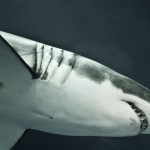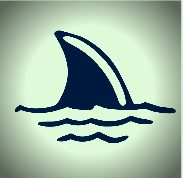 GANSBAAI (SOUTH AFRICA)- Where commercial shark dive operators and official conservation organisations cooperate, sharks are rescued. As in the case of a a juvenile female Great White Shark in the South African waters of Gansbaai, entangled in fishing line.
GANSBAAI (SOUTH AFRICA)- Where commercial shark dive operators and official conservation organisations cooperate, sharks are rescued. As in the case of a a juvenile female Great White Shark in the South African waters of Gansbaai, entangled in fishing line.
The line had become wrapped around the shark’s head and through its gills, and another half a metre, with hooks and bait attached to it, was trailing behind it. She was spotted by shark cage diving operators who told the Dyer Island Conservation Trust, which runs conservation and research programmes in the region.The shark would have faced certain death if the line remained in place,
Great White Sharks are a protected species in South Africa, but are illegally targeted by shore-based fishermen. Each year, about 30 of the species die in the shark nets off the KwaZulu-Natal coast.
